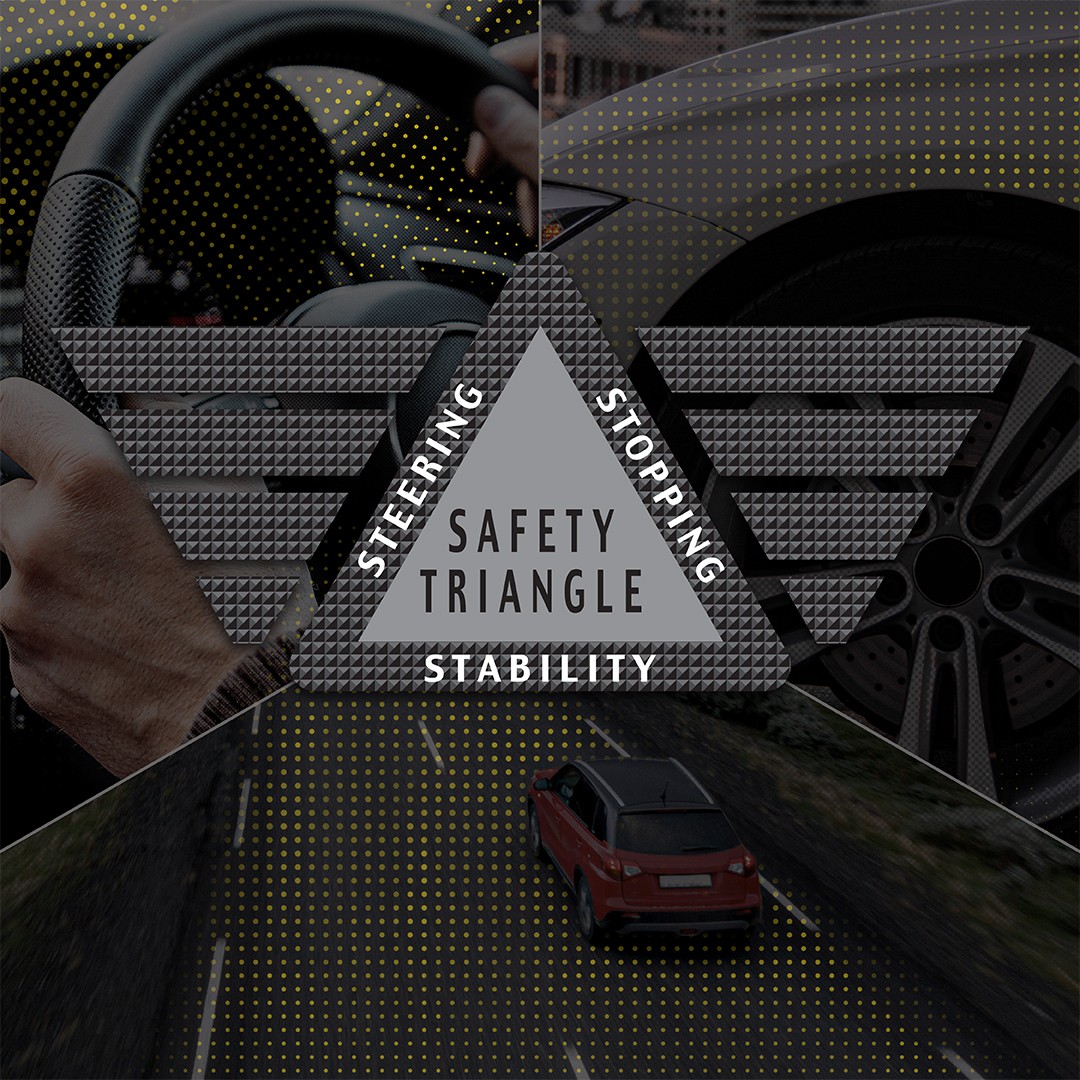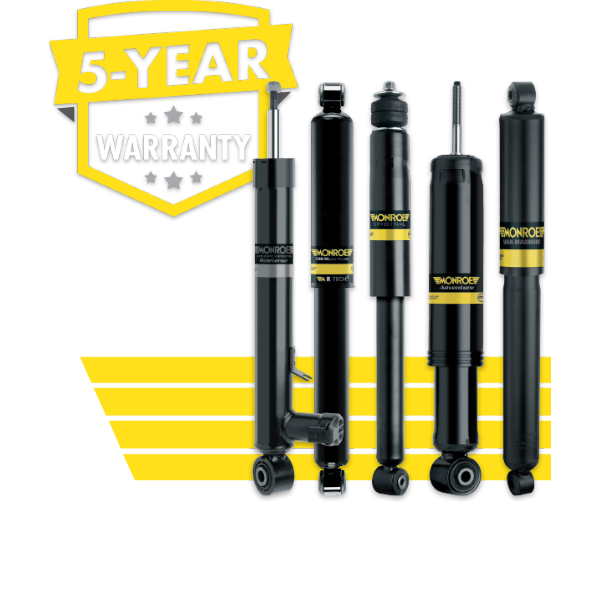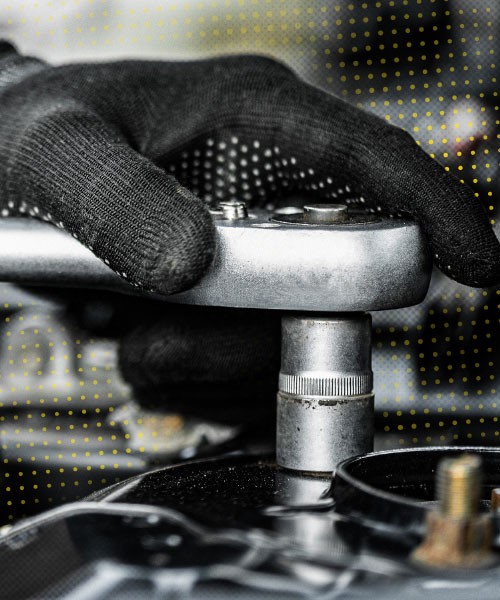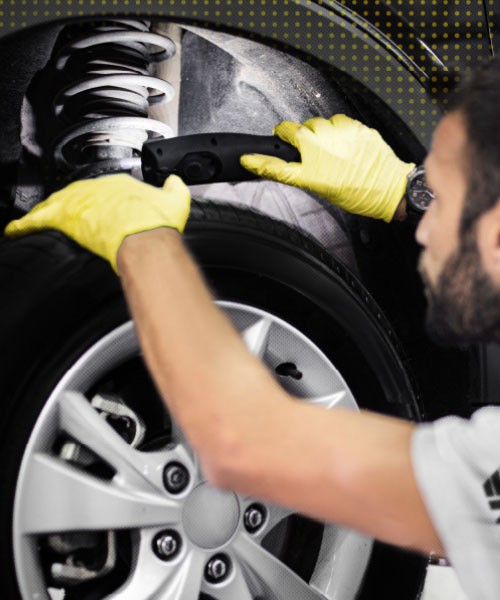Vehicle owners really want new shocks and struts. Workshops need to help them understand why.

If the world were flat, all roads empty and straight and every driving surface perfectly smooth, you wouldn’t need to read this article. That’s because in a perfect world there would be no practical reason for cars to be equipped with suspension systems.
The world isn’t flat, of course, and drivers need to safely navigate hills, curves, tight turns, congested roads and uneven pavement. And each of these characteristics – plus many more – make a vehicle’s suspension system vital to safe driving and reliable vehicle performance. Unfortunately, many vehicle owners don’t recognize this fact, which presents a great opportunity for workshops to add value to their customer relationships.
A suspension, by definition, “suspends” or supports the vehicle body over the wheels. Its purpose is to ensure safe, comfortable, reliable travel in a full range of operating conditions and environments – hills; uneven pavement; wide curves and tight turns; low and high speeds; heavy or light loads; and when accelerating, cruising or stopping. The suspension adjusts to each of these variables by both permitting and metering the vertical movement of the vehicle’s springs, axles and wheels. These actions, in turn, help maintain overall driving stability.
Connecting with the road
A modern suspension is made up of many parts that both carry the weight of the vehicle and help maintain firm contact between the tires and driving surface. This tire-to-road contact, or contact “patch,” is vital to safe driving. To understand why, it’s important to remember that a suspension is a system of interconnected components, each of which plays a role in keeping drivers and passengers safe.
For example, many customers might assume their vehicles’ steering capabilities are wholly dependent on the steering gear and other components that actually turn the wheels. Or they might believe their cars’ stopping distance depends solely on their brake systems. Of course, in both cases they would be incorrect.
Here’s one way to help them understand the full role of their suspension systems: Ask them to imagine they are driving at high speed on a highway when, suddenly, an animal darts into their lane. Their natural response might be to swerve into the adjacent lane to avoid hitting the animal. However, their ability to safely steer around the animal at high speed will depend on firm tire-to-road contact and precise control of their vehicle’s center of gravity, both of which are strongly influenced by the condition of certain components within their suspension system.
As another example, ask a customer to imagine they are driving at 35kph over a relatively bumpy road when a vehicle suddenly stops in front of them. Naturally, they would apply the brakes to avoid a collision. However, if their vehicle’s wheels are not in firm contact with the road, or if the front of the vehicle dives excessively as body mass is shifted to the front wheels, even brand-new brakes might not be able to stop them in time.
In each of the scenarios above, avoiding an accident is dependent on three key safety characteristics – steering, stopping and stability. These characteristics make up a vehicle’s “Safety Triangle,” which serves as a helpful tool in explaining how key suspension components influence the way a vehicle interacts with its driving environment.
And at the very heart of this system are the vehicle’s shock absorbers and struts.

How shocks and struts can affect safety
It’s no secret that many – perhaps even most – drivers believe shocks and struts perform one basic function: enhancing comfort by absorbing road impacts. While important, this function is just one of several performed by these ride control components. In reality, they are primary contributors to safe, reliable vehicle operation by influencing steering, stopping and stability, contributing to longer life of other key suspension system components, and helping the driver remain alert, confident and in control.
The true role of shocks and struts is an important story to be shared with your customers. Once they understand these facts, they will expect you to tell them when their vehicles need ride control replacement.
‘It doesn’t ride like it used to’
Many car buyers base their purchase on a vehicle’s overall ride and handling, or road holding, characteristics. They might not be aware that road holding is largely influenced by the ability of shocks and struts to “hold” the tires firmly against the road surface. Keep in mind that the average contact “patch” of a tire in real-life conditions is equivalent to the surface area of four small postcards. When this small area is reduced by the presence of a worn shock or strut, performance of the tire itself, as well as the brakes and steering system, can be undermined in certain situations.
As leading example*, research has shown that a vehicle equipped with 50%-worn shock absorbers, traveling on an uneven surface at 80km/h, will need an extra 2.6m to arrive at a full stop as compared to the same vehicle equipped with new shocks. Surprisingly, the presence of anti-lock brakes on the vehicle can make the difference even more extreme: An ABS-equipped vehicle with 50%-worn shock absorbers and traveling at 50km/h can require around 5.8m of additional braking distance as compared to the same vehicle without ABS.
Maintaining stability
Many consumers understand the concept of vehicle stability or at least have experienced the effects of an unstable ride. They might be surprised to learn that shocks and struts strongly influence stability by controlling suspension movement and keeping the tires firmly planted on the road.
When a vehicle is navigating a curve or turn, the resulting side-to-side load transfer causes the body to lean away from the steered direction. When the transferred load exceeds the grip, provided by the tires, the rear of the vehicle will tend to swing away from the turn. This is a classic case of a loss of stability.
When interviewing a customer about the condition of their vehicle, it’s smart to ask whether they have noticed this condition becoming increasingly common. If so, there’s a good chance their shocks and struts need to be replaced. Research* indicates that a vehicle equipped with 50%-worn shocks and traveling at 60km/h around a roundabout with 40 meters of diameter can lose stability and wander off course at a speed 7km/h slower than the same vehicle equipped with new shocks.

Staying safe on wet pavement
No matter how skilled a driver might be, the act of aquaplaning – even for a fraction of a second – can be terrifying. This phenomenon typically occurs at higher speeds when a very thin layer of water breaks the contact patch between a vehicle’s tires and the road surface. Given the fact that shocks and struts help hold the tires against the driving surface, it should come as no surprise that they can help eliminate this potentially dangerous problem. Research* shows that a front-wheel-drive car equipped with 50%-worn shocks, with new tires and driving at a constant speed on a 6mm film of water will experience aquaplaning at a 10% lower speed than on the same vehicle equipped with new shocks.
Another condition than can be unnerving is becoming briefly dazzled or temporarily blinded by the headlights of an oncoming car. Again, your customers might be surprised to learn that worn struts can contribute to this issue. Because worn struts can reduce a vehicle’s ride height, they can lower the projected light beam of a vehicle’s headlights, impairing driving visibility both for the driver of the affected vehicle as well as those on the opposite side of the road.

Working too hard?
Shocks and struts even help reduce the effort and attention required by a driver to keep their vehicle safely in its lane. Remember, steering, stopping and stability are closely tied to the condition of a vehicle’s ride control components. Worn shocks and struts can increase steering “wander,” making it necessary for almost constant corrections by the driver. Poor tire-to-road contact can also make it more difficult for the driver to feel in control of the vehicle. And concerns about stopping distance – also affected by shock and strut condition – can cause additional stress increasing the time to react towards unexpected situations. Each of these conditions can increase driver fatigue over time.
Ask your customers whether it seems to be more difficult to maintain precise control of their vehicles in all driving situations. If they say “yes,” make sure to have your team conduct a road test followed by close inspections of the full suspension system, including the shocks and struts.
Tires are expensive
Depending on the vehicle, the cost of a new set of tires can be significantly higher than the price of two new shock absorbers. Yet many drivers do not understand that the service life of their tires can be severely reduced by the presence of worn ride control parts. Cupping is the most common form of premature tire wear that can be caused by worn shocks or struts.
Failing to replace worn ride control parts can also lead to damage of suspension bushings, ball joints, axial rods and other suspension parts.
Perform the complete repair – and recommend the best: monroe®
Once you’ve helped your customers understand the need for new shocks and/or struts, be sure to do the job right so they will request the same repair on their other vehicles. A complete, high-quality ride control repair should always include the following:
- Great performing products from a trusted brand, such as Monroe Original shocks and struts.
- Complete pairs of shocks at the front and/or rear of the vehicle; never replace just one shock or strut.
- A new Monroe mounting kit (for struts) or protection kit (for shocks) for each new replacement. These kits are key to ensuring the outstanding performance and durability your customers will expect.
The content contained in this article is for informational purposes only and should not be used in lieu of seeking professional advice from a certified technician or mechanic. We encourage you to consult with a certified technician or mechanic if you have specific questions or concerns relating to any of the topics covered herein. Under no circumstances will we be liable for any loss or damage caused by your reliance on any content.
*TÜV test - Institute of Traffic Safety
other articles that might interest you
discover the monroe® range
Discover Monroe shock absorbers, now with a 5 year warranty on any qualifying Monroe product when completing a full replacement of shocks and struts in pairs, including protection and if applicable mounting kits.


